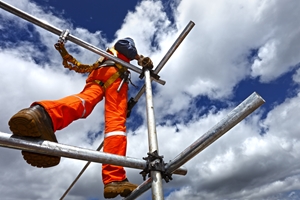
Did you know that the origins of concrete trace back thousands of years?
The very earliest, crude forms of concrete were used by the ancient Egyptians around 5,000 years ago, when they built they pyramids. A few centuries later during the Roman Empire, concrete and cement were used to their full potential to create magnificent buildings that still stand today. The Pantheon and the Colosseum are classic examples of Roman concrete masterpieces, constructed in c.126 A.D. and 70 A.D. respectively.
Think for a second. Roman concrete is less strong than what we use today in the modern world – approximately ten times weaker, according to Renato Perucchio, a mechanical engineer at the University of Rochester in New York – and yet, these buildings are still upright.
Just imagine how long your sturdy custom designed shed will last with a concrete slab?
This is exactly the reason why Shed Boss lays concrete beneath our galvanised steel structures. Here, we will cover a range of information you need to know about concrete for your shed, as well as look at the health and safety issues you would need to be aware of should you decide to build your own shed.
The use of concrete by Shed Boss
We have a team of qualified and licenced builders who will work on the construction of your shed, and coordinate the concrete laying process for you. Working with concrete requires a certain level of expertise and experience for it to be done correctly, especially since it's not as easy as a mixing truck simply pouring it in. The correct earthworks need to be done in advance, and there are several factors to take into consideration.
For most domestic sheds, we pour 100 millimetres of concrete per 25 megapascals.
For example, the type of soil on your property could impact the concrete slab. When we carry out our preliminary research on your property, we will identify the soil classification (SC) and accordingly plan the concrete laying process because different SC affects concrete differently.
The SC can react with concrete, meaning it may swell or shrink depending on the soil itself. It helps that we have years of experience working with SC and concrete, and so choosing a complete project service from us takes care of that for you.
The size of your concrete slab will depend on the specifications you choose for your custom shed when you design it on the Shed Boss app. In general, though, for most domestic sheds we pour 100 millimetres of concrete per 25 megapascals (compressive strength of a foundation) and use F62 mesh on chairs and forticon.
 Concrete slabs form the base for Shed Boss sheds, and our qualified and licenced builders can manage laying concrete expertly.
Concrete slabs form the base for Shed Boss sheds, and our qualified and licenced builders can manage laying concrete expertly. Finally, in order to get the COLORBOND® steel warranty, the concrete slab needs to be laid down before the steel walls are built – this prevents rusting. We also add to the overall sturdiness of the build by inserting the drip-free edge of the steel wall sheeting down towards the side of the concrete slab – around 50mm – without touching the slab itself. Our methods are the best way to ensure you warranty is valid, as laying down the concrete yourself can breach the requirements and could cost you the warranty.
Health and safety when laying concrete
If you do decide to build your own shed, it is recommended that you only do so if you have prior experience with concrete and construction. It's a complex process, involving many steps such as scraping off the sod and topsoil, adding gravel, using straight form boards to create the shape of the slab with extra strong bracing, and then mixing and pouring in the concrete.
In addition to mastering the complexity of laying concrete, you'd also have to be very careful throughout the process. It's no secret that there are a raft of health and safety risks associated with construction work – and laying concrete is no exception.
In fact, Safe Work Australia reported that between 2012 and 2013, land development and site preparation accounted for some of the highest numbers of serious incident claims per 1,000 construction workers. Nearly a quarter (23.1 per cent) of all serious claims during this time were due to injury from land developing and preparing sites.
It is likely that concrete was a contributor to this, due to the nature of the substance. Indeed, 7 to 15 per cent of concrete volume is made up of cement, notes the Portland Cement Association. Because cement is an alkaline material, it's caustic when it is wet and can therefore cause severe chemical burns to skin that is not covered. Eyes and exposed skin are at risk of such burns. The risk can be minimised by wearing proper clothing, eye protection such as safety goggles, water-proof gloves, steel-toe gum boots and long trousers or overalls.
Call us to get a quote and talk about how we can make the process easier for you.
 It's important to be aware of health and safety measures when working with concrete.
It's important to be aware of health and safety measures when working with concrete. 